China expands its amphibious capabilities
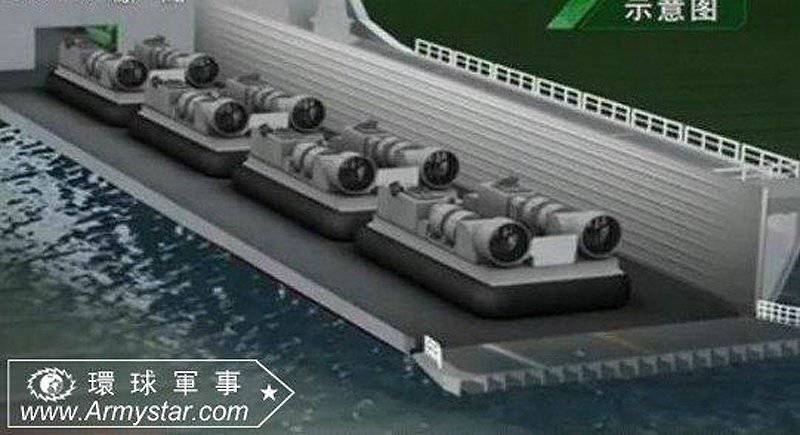
Section of the internal deck of the amphibious assault ship Type 071 LPD with a dock occupying about two thirds of the ship’s length
Chinese landing forces on the rise. The country is investing heavily in new ships and vehicles that can satisfy its power projection ambitions.
China's landing abilities are inexorably growing. Depending on what point of view you hold, China can be viewed differently, with a delay in building its armed forces and capabilities commensurate with its size and economic power. Either this is a simple revival of his interest as a global player seeking tools for power projection, or an equal competitor playing with his muscles, or it is a direct threat to neighbors with bold claims to the territory and wealth of the subsoil.
Regardless of the reasons for the growth of Chinese airborne forces, they are quickly gaining experience. Over the past few years, the trial of the Chinese fleet expanded their horizons, since the end of 2008, his ships have been deployed near the shores of the Horn of Africa, where they participate in the fight against pirates, and he is increasingly interested in exercises within and outside his region. In July 2013, the Chinese fleet completed the largest series of exercises in foreign waters, and then in September he became the main guest at the Australian foreign fleet parade.
Over the past two decades, the Chinese fleet has been relentlessly building its submarines and surface combat fleets, as well as confidently developing the deck Aviation much to the chagrin of India with its sluggish aircraft carrier projects.
However, China is making the greatest success in creating the amphibious component, which is not missed by the opportunity to point out its smaller island neighbors. In March, 2013, the operational connection of the landing ships of the Chinese fleet under the command of the amphibious assault ship Type 071 caused a stir in the region when it passed full steam ahead of the disputed Spratly Islands, conducted a landing operation and visited the beach of James near Malaysia.
In July, the satellite images of the Changxing Island shipyard of the Jiangnan Group’s 2013 showed some progress in building some large parts of what was originally considered a Chinese aircraft carrier, but it could well turn out to be a universal landing craft.
After a few months, it is still not clear what kind of vessel it is, but it is quite possible the landing helicopter carrier (LHD), which China Shipbuilding and Offshore International Co (CSOC) is building for Turkey. China still has to build LHD and CSOC officials working with the Turkish bid claimed that this project was only for export, but that China had great interests in this area. At the end of 2012, Admiral Yin Zhou announced that China would like to have large LHDs in the future, possibly with a displacement in the 40 area of 000 tons.
Prior to the appearance of this ship, the landing force component of the Chinese fleet will consist of three amphibious dock ships of the Type 071 class Yuzhao with a displacement of 18 500 tons; in addition, reported on the construction of the fourth such ship.
Evidence of the practicality of China's approach to the acquisition of the fleet is the laying of the first ship of the Type 071 class under the name of Kunlunshan in June 2006 of the year and the entry into service next November. He underwent extensive sea trials and carried out a test dive before, respectively, the second and third hull of Jinggangshan and Changbaishan were laid in 2009 and 2010. Changbaishan was manned in September 2013 of the year.
The ships have a total length of 210 meters with the power unit SEMT Pielstick 16 PC2.6V 400 CODAD, rotating two propellers and allowing the ship to reach maximum speed to 20 nodes. Surprisingly, but so far little is known about their exact capacity, it is only known for certain that the crew of each ship is 120 people.
Each ship has a hangar, which includes a helicopter squad of four Z-8 helicopters, and two take-off areas on the flight deck. Below decks the ships have a two-level hangar that can receive up to 16 ZBD-05 armored vehicles. These aft hangars go into the dock, which can accommodate four Type 726 hovercraft Yuyi class aircraft.
The pictures also show a pair of amphibious assault boats for transporting troops and vehicles (LCVP) in davits in the middle of the ship, but there is no longer any information about the carrying capacity or capabilities of these vessels.
However, China is engaged in the creation of dual-use capabilities, that is, vessels requisitioned from the merchant fleet may be involved.
The launch of the Bohai Sea Green Pearl ferry with a displacement of 2012 tons was the key milestone of this process in August 36. Its main role is to serve as a passenger ferry, but it is guaranteed to provide the possibility of using as a strategic transport for 000 military personnel, 2000 vehicles (or “dozens” of main combat tanks) and other material means. It can also serve as temporary barracks with a helicopter platform in the stern, although without hangars it will be limited to the temporary reception of helicopters.
Obviously, three such vessels are under construction, while several container vessels are also being reworked for the transport of military cargo.
The working horses of the amphibious forces of the fleet, however, remain tank-landing helicopter-carrying ships (LSTH) of the Yuting class. 10 ships were built in two batches and divided into two subclasses: Type 072 II Yuting I (commissioned between 1992 and 2002 years) and Type 072 III Yuting II (2003 - 2005).
Both types actually have the same dimensions and official operating characteristics, but later versions have a slightly modified superstructure with structural modifications to the ramp and loading sluice and easier access between the fore and aft decks.
Thus, the declared characteristics for both types include the cruising range of 3000 nautical miles, the maximum speed of 17 knots and the total displacement of 4877 tons (3830 tons without cargo). They have a total length of 120 meters and a draft of the 3,2 meter, although, like the LST, they are intended for unloading their “contents” to the coast, which can consist of 250 man of troops and 10 light tanks. They can also unload using four amphibious LCVPs or two medium helicopters.
They are armed only with cannons, but they have on board three twin 37 mm / 63 caliber guns to provide support when taking the coastal bridgehead.
As can be understood from their designation, they originate from the earlier Type 072 Yukan LST tank landing ships, but with the addition of a large helicopter deck (without a hangar) instead of a stern gun and a superstructure above the tank deck. The original Type 072 ships were built in the period from 1980 to 1995 a year, and seven such ships still keep watch in the fleet of the East China Sea.
Without a flight deck and with a reduced payload (4237 tons of full payload, 200 soldiers and 10 light tanks) Type 072 are less powerful ships, demonstrating rather the process of upgrading amphibious capabilities undertaken by the Chinese fleet.
The Chinese fleet also has a large fleet of medium landing craft (LSM) in service. There are a number of obsolete ships, for example, seven Yuliang Type 079, the construction of which began in the 1980 year. The lists still include several single old-timers of other classes, but most of the landing forces consist of a dozen Wuhu-A Yuhai Type 074 ships of slightly smaller size and 10 of newer Yudeng III LSM Yunshu class.
Wuhu-A class ships with a length of 58,4 meters were built in the middle of the 90-s and can transport two light tanks and 250 people with a full displacement of 812 tons.
In contrast, Yudeng III ships with a length of 87 meters and a displacement of up to 1880 tons were built in 2003 - 2004 years. They can cross 1500 nautical miles with 14 cruising speeds, take 6 light tanks on board, or 12 trucks onto a car deck loaded through the stern gates.
In order to unload landing forces, the Chinese fleet traditionally relies mainly on relatively common universal landing craft (LCU); some of them have been in service since the 60's and 70's. Of course, there are also new projects here, for example, catamarans Type 074A LCU of Yubei class with a displacement of 1219 tons, which entered service in the 2004 and 2005 years. Somewhat unusual is the fact that these 10 ships are distinguished by the placement of the wheelhouse and deck superstructure on the port side in the middle of the ship, rather than the traditional accommodation in the stern.
However, at present, most of the efforts of the Chinese fleet are directed to the process of modernization and expansion of the flotilla of air-cushion landing craft (LCAC).
China's first airborne assault ship Skua Skua Skua
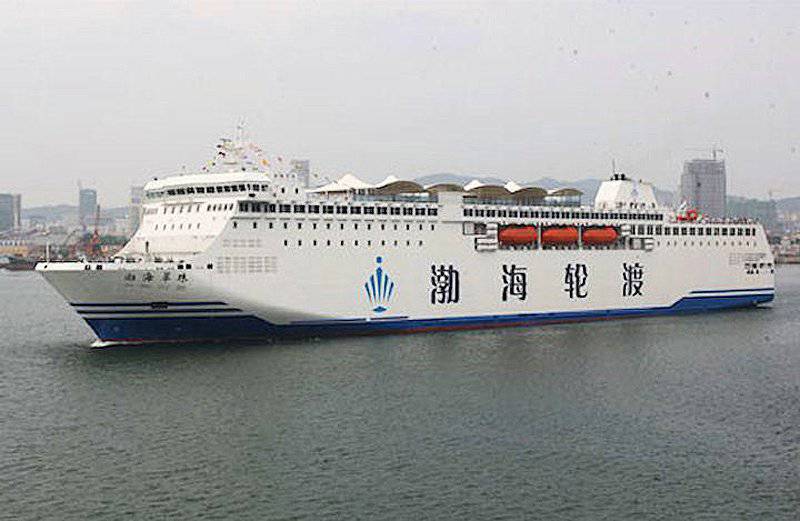
Bohai Sea Green Pearl - a new example of commercial-military cooperation. This ferry is offered as a strategic reserve vessel for the transfer of military equipment.
Since 60, China has already deployed three generations of hovercrafts with varying degrees of success before the Type 722II Jinsha II project actually showed itself at the end of the 80s. Several ships are still in service, offering high-speed delivery and payloads in excess of 65 tons.
However, the construction of a much more modern LCAC - Type 726 class Yuyi, defined for service in conjunction with the Type 071 LPD, as well as the end of a lengthy project to build a Ukrainian airborne assault ship Bison, has recently begun.
At the moment, there are few details on the Yuyi class, but from the pictures and the very general models being displayed it is clear that the design of these vessels is very similar to the American LCAC concept with an open car deck / cargo platform in the center of the platform between the fairing gas turbines QC-70, which create traction and lift. These engines are somewhat larger than the engines of American ships, which is probably one of the reasons for increasing the size of the platform.
As with the American LCAC, the Yuyi steering room / cabin is also located in front, but on the left side, and not like the American on the right side. Vessels have a through passage between the bow and the aft ramps, the latter is located between two large closed propellers.
Despite some similarities, Chinese vessels are actually slightly larger, the length of the 33 meter and the width of the 16,8 meter (American LCAC is 26,4x14,3 m), although it seems to have a slightly smaller displacement of 170 tons (American 185 tons) and a similar carrying capacity 60 tons. This means that they can transport army MBT Type 96. According to statistics, both vessels have the same driving performance with a cruising range of 200 nautical miles at a speed of 40 knots.
The first ship, Yuyi, was built at the Ojuxin Shipyard and launched in 2009, its trials are still ongoing. No information about the construction of other vessels.
Meanwhile, the Chinese project to build four hovercraft Bison is gaining momentum, the first ship was delivered in November 2012 of the year.
China has been negotiating these heavily armed ships since 2005. Their shipments should have given the fleet the potential to deliver three OBT or 10 BTR and 250 paratroopers, although they have a relatively short cruising range without refueling 300 nautical miles with 50 nodes (slightly less than the maximum speed of a 63 node).
Upgraded for landing operations, the Chinese WZ501 infantry fighting vehicle with a new, large water deflector in front of the hull and a large outboard engine in the stern
Landing
Let's move from landing ships to floating facilities. The military doctrine of the Chinese army, which undoubtedly takes into account the terrain in the region, determines that many of the combat armored vehicles (BBMs) must have some ability to swim, that is, it is intended to force lakes and rivers with a quiet current and even land on the coast.
In addition, both the Chinese army and navy have their own amphibious forces. The army has the largest forces, at least one amphibious armored brigade and two amphibious mechanized divisions, but the marines of the Chinese fleet can still boast of significant capabilities of two amphibious brigades (1 and 164), which are deployed in the South China Sea and near its headquarters in Zhanjiang. Both types of troops have similar weapons, although the fleet is a lighter component and is currently not armed with MBT.
The Chinese army has long been interested in floating BBM, but the new generation of tracked BBM marks a qualitative change in its capabilities. This is especially true of firepower and the ability to work in a wider range of sea-level balancing compared to older machines. This allows them to be landed with LPD at a greater distance from the coast, which increases tactical flexibility along with the survivability of the landing craft.
The initial steps to improve the amphibious characteristics of the outdated WZ501 / Type 86 infantry fighting vehicles (a copy of the Russian BMP-1) consisted in installing a larger water deflector shield and a powerful outboard motor in the stern. It is claimed that this motor has increased the maximum speed of the melt by 50% to 12 km / h, but the machine, nevertheless, has limitations of the melt with increased sea level.
As a result, the Chinese industry has developed a line of more specialized machines with better buoyancy and higher speeds of water, allowing them to perform landing more effectively, cross the surf line and move inland.
The United States learned from the development of the currently-canceled EFV expeditionary combat vehicle, as it was too complicated and expensive. But nothing can stop China and he has developed a similar (if not worse) machine that has been designated ZBD-05.
The newest airborne combat vehicle ZBD-05 was first shown to the public in significant numbers in 2009 year. A few years before, the appearance of images of this machine, moving along the water surface, apparently at high speed, created waves in the direct and figurative sense. It is estimated that more than 1000 of these vehicles and their specialized support options were manufactured and entered service by the amphibious forces of the army and navy.
The exact characteristics of the machine on the water are not confirmed, the manufacturer simply states that they are “high”, but various sources report floating speeds up to 30 or 45 km / h (node 16-24). If this is true, then it is significantly higher than the speed of its predecessors and foreign analogues.
Several options have also been developed that allow mixed forces to sail together to land and land on it with full-time engineering means, fire support and command and control equipment.
Unlike most traditional amphibious vehicles, which were usually reworked from existing structures, the ZBD-05 was specifically designed to launch afar offshore and continue to move quickly to shore, while protecting the crew and the landing force from small-arms fire. weapons and shell splinters. The need for a streamlined hull means that for amphibious operations a machine of this type cannot be equipped with trellis screens, but in theory they can be installed ashore to move further inland.
Although it is unlikely to hit the target accurately while overcoming the coastal strip, nevertheless, the machine is capable of firing on the suppression from a stabilized 30-mm double-feed cannon and an 7,62-mm machine gun installed in a twin turret with mechanical drives. Launchers for missiles Red Arrow 73 installed on each side of the tower; These missiles are available with various warheads and can hit various targets at a distance of up to 3000 meters.
The crew consists of a commander, an arrow (located in the turret) and a driver; nine infantrymen are stationed in the aft compartment. Embarkation and disembarkation is carried out through the aft ramp with a power drive.
Despite its special design for the water, the machine still needs some preparation to enter the water. But for the crew it is relatively simple, it is necessary to turn on the bilge pumps and raise the water deflector shield. In the water, the driver reduces the resistance by drawing in the suspension units and the tracks, and then turns on two water cannons in the stern, driving the machine with standard controls.
The Chinese company North Industries Corporation (NORINCO) still has to offer ZBD-05 for export, but, like with other machines designed to meet the requirements of the Chinese army, the situation is unlikely to change in the future.
In the meantime, several options were developed, including an artillery mount, designated ZTD-05. It has the same body, but another tower with a stabilized 105-mm cannon connected to a digital SLA for the exact destruction of moving targets. The gun can also shoot during the water, providing amphibious units with relatively strong full-time fire support.
The gun can fire not only with traditional 105-mm ammunition, such as armor-piercing sub-caliber, but also with cumulative anti-tank and anti-bunker ammunition; the latter is said to be able to pierce a wall of reinforced concrete with a thickness of 1 meter at a distance of 1500 meters.
Another fresh development is a programmable anti-personnel / for the destruction of the material part of the projectile. In addition, the gun can fire a GP2 laser-guided projectile. This high-precision projectile with a tandem cumulative warhead is capable of penetrating 650 mm steel armor protected by dynamic protection units at a distance of 5000 meters.
Other specialized ZBD-05 variants include a control point with a raised roof and an auxiliary power unit for supplying all communication equipment without starting the main engine, armed only with a 12,7-mm machine gun mounted on the roof.
On the basis of the housing of the ZBD series, an engineering version was developed with a front dozer blade and a telescopic bucket with a hydraulic drive.
Chinese troops are also armed with a lightweight Type 63 amphibious tank, which is in many ways similar to the Russian PT-76 amphibious tank (who would doubt), but from the very beginning another turret armed with an 85-mm cannon, 7,62-mm paired machine gun was installed and a 12,7-mm machine gun mounted on the roof.
Many of these vehicles have now been upgraded to an improved Type 63A standard, which received many improvements, including increased buoyancy and a new turret armed with an 105-mm main cannon and similar auxiliary weapons.
Venezuela recently accepted shipments of a batch of Type 63A and BMP WZ501 / Type 86 tanks, indicating that the Type 63A is currently out of service and replaced with a ZTD-05 vehicle.
The ZTD-05 floating gun, armed with an 105-mm cannon, comes ashore during a landing operation
The upgraded lightweight amphibious tank Type 63A features a new turret and better buoyancy. In the photo, the tank in front of the water with raised water reflector
China also developed and deployed a 122-mm self-propelled tracked artillery mounts, probably named Type 07B, to support their amphibious assault vehicles. It replaced the outdated 12-107-mm rocket launcher Type 63 rocket system, which was used to support fire with indirect fire.
Despite the fact that the appearance is quite a powerful machine, but, nevertheless, it has a water deflector shield in the nose. That is, it can be assumed that, at least, it can overcome deep fords and possibly swim, although not to the same extent as amphibious assault vehicles ZBD.
The howitzer has a turret with a 122-mm cannon, which is also used in many other Chinese artillery systems, tracked, wheeled and towed. Its maximum range obviously depends on the projectile / charge combination; it can reach 15,3 km when firing standard high-explosive fragmentation projectiles, 22 km fragmentation-high explosive with a bottom notch or 27 km high-explosive active-missile with a bottom notch.
In addition to all these new machines, the Chinese industry has developed systems for preparing landing areas, for example, the Type GLM120A mechanized web laying system, which is currently in service. It is usually used to prepare landing sites, river crossing points that can quickly become unusable under the tracks of a heavy machine and delay a landing operation.
The system consists of an deployable roll of pavement, which is mounted along the platform of a locally produced Mercedes-Benz 6x6 truck.
During preparation, the roll is rotated 90 °, and the truck reverses to the canvas as it is laid; in five minutes, the width of the 4 meter of the meter and the length of the 40 meter. The canvas maintains long passes of tracked vehicles with a combat weight of up to 60 tons and wheeled vehicles with axle loads up to 20 tons. After the passage is completed, the roll coagulation takes only 10 minutes from either end.
Also in service with the Chinese army has a light roadbed Type GLM 123, which is deployed from the machine manually or simply by hand. It can be used on slopes up to 20%, which is especially important during amphibious operations.
Mechanical deployment of 120 meters of web width 4 meters takes 5 minutes; It can withstand tracked vehicles weighing up to 25 tons and wheeled vehicles with axle loads up to 10 tons.
China is also armed with a number of more specialized engineering vehicles that can be used during amphibious operations. These include various demining systems that can be used to clear minefields on the coast after the initial assault.
Materials used:
www.janes.com
www.china-defense.blogspot.com
www.globalsecurity.org
www.norinco.com
www.sinodefence.com
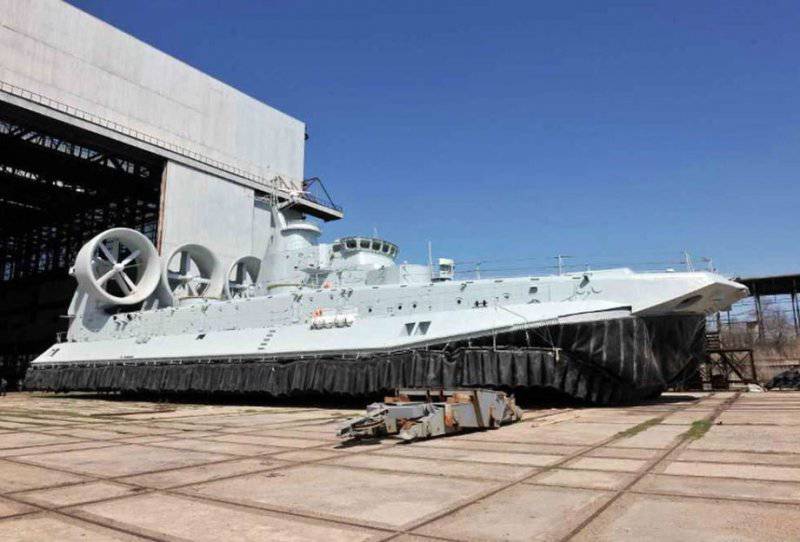

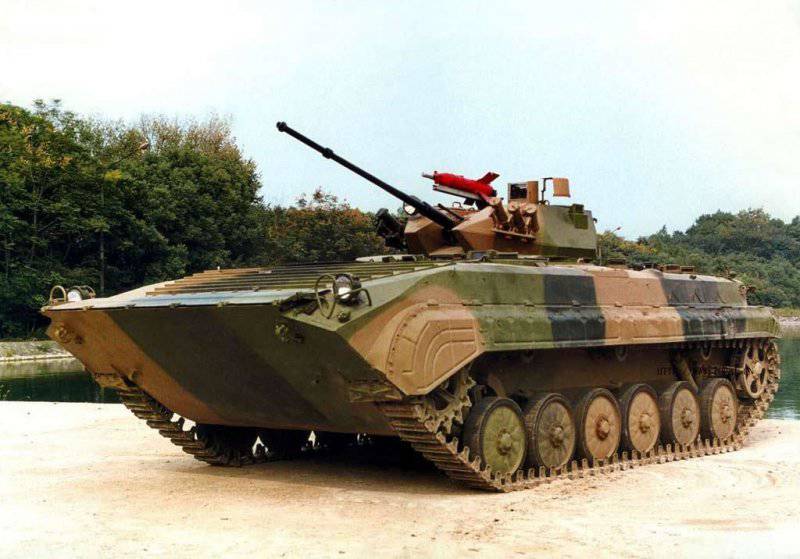
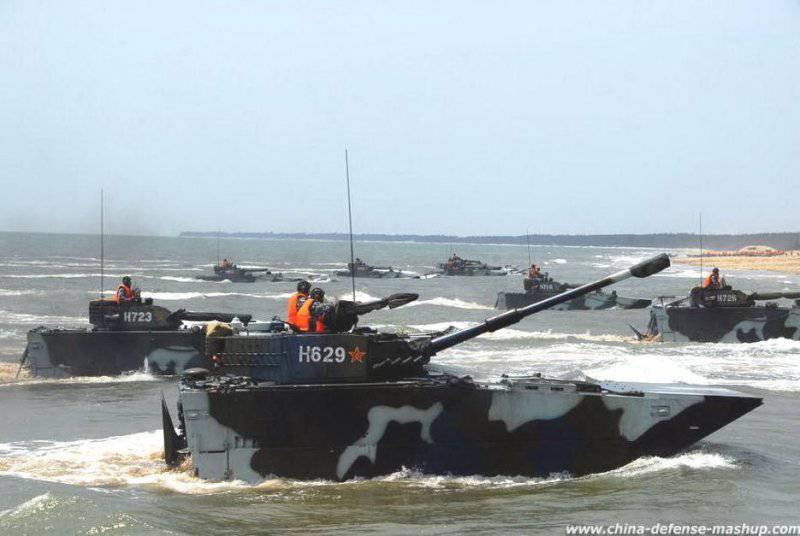
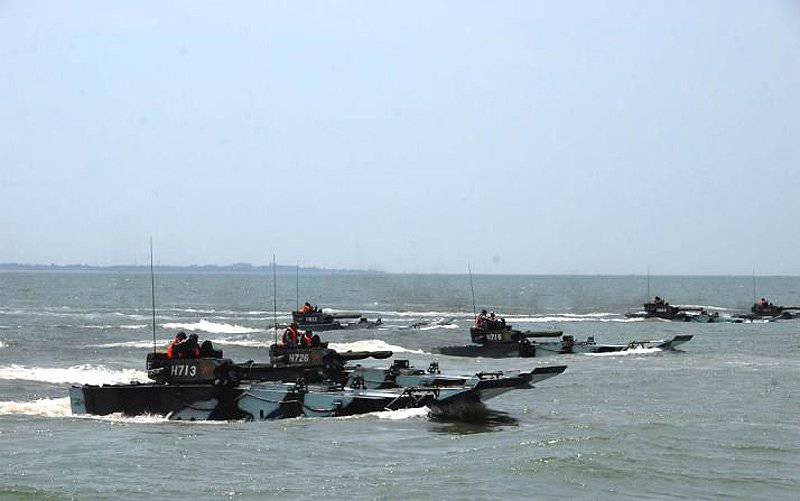
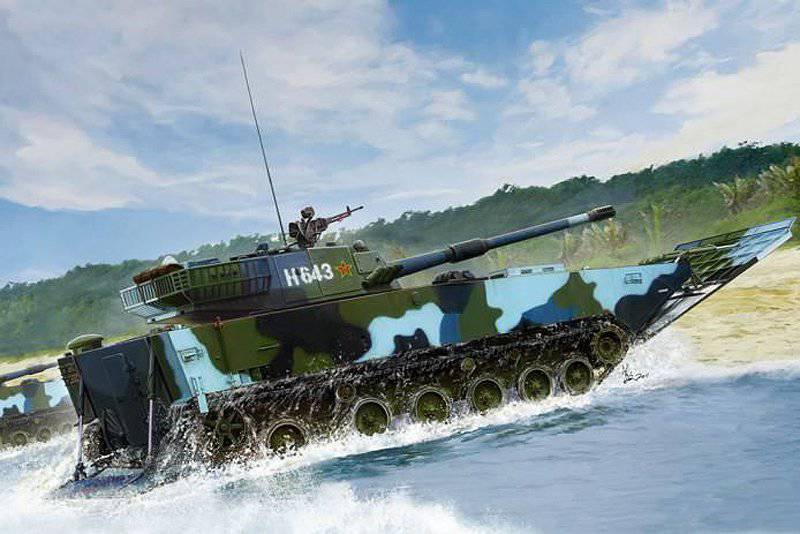
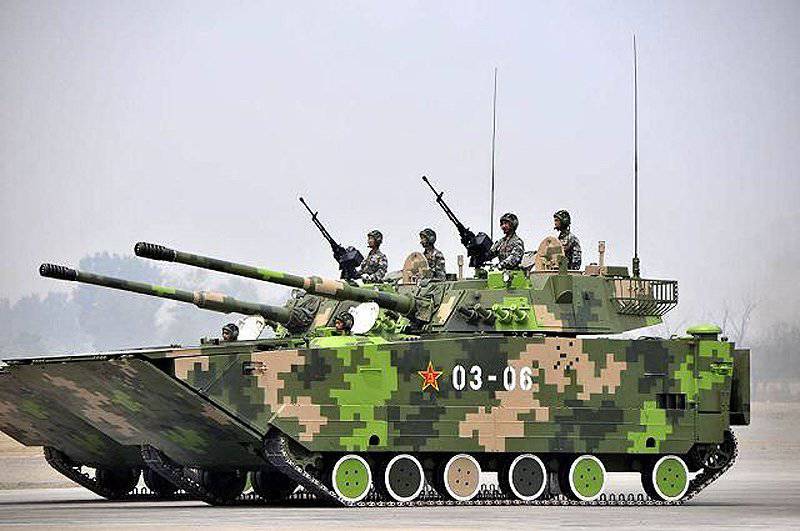
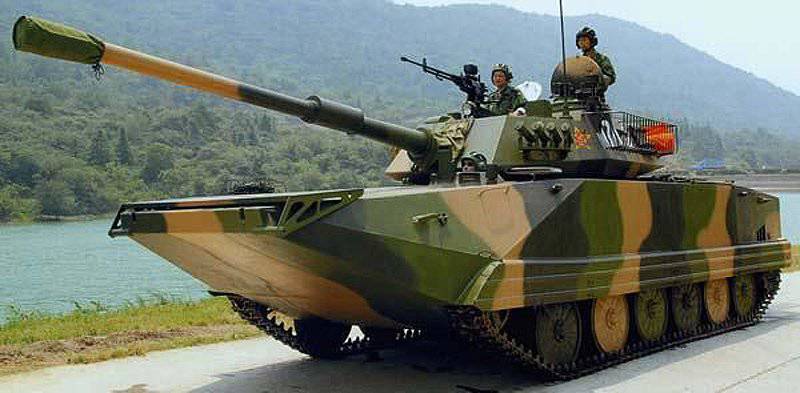
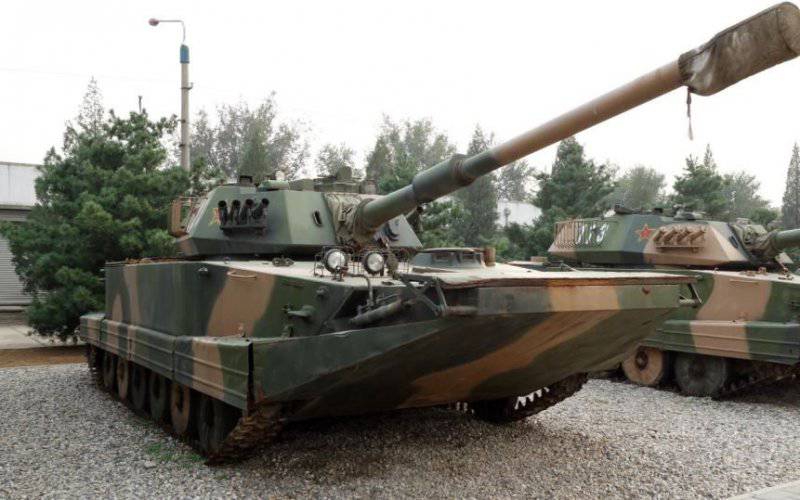
Information